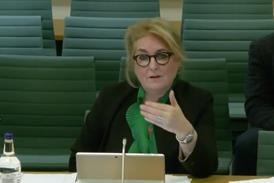The Jackson reforms, due to take effect 1 April, have met with some controversy and even a degree of bad press. The details are complex; the ultimate effects unclear. The precise wording of some of the measures only became visible when laid before parliament at the end of January, and a number of interested parties have campaigned vigorously against the reforms, fearing loss of business.
Lawyers across the industry and corporates should know the matters that are covered in the reforms and work with the expert litigators in private practice to make sure the detail is understood in the context of any relevant court matters.
The previous round of procedural reforms (the Woolf reforms) came more than a decade ago and brought in the Civil Procedure Rules 1999. Those reforms made litigation faster, though not necessarily cheaper. Lord Justice Jackson’s remit, on appointment in 2008, was to control the rising costs of litigation, leading to the measures now coming into force. The principal changes relate to the costs a losing party has to pay. Currently, lawyers cannot generally take their fee as a proportion of the ultimate compensation (known as a ‘contingency fee’ basis).
But lawyers can work on a ‘success fee’ basis (known as a ‘conditional fee agreement’ (CFA)) that allows a 100% fee uplift, which is paid by the losing party. Currently, not only does the losing party have to pay the success fee uplift: they also have to pay associated after-the-event insurance premiums, which can be nearly as expensive as the legal fee itself. Claimants have proceeded pretty much risk free, whilst defendants face enormous and disproportionate costs on multiple levels.
This imbalance changes for arrangements made after 1 April, as defendants who lose their case will no longer have to pay either the success fee uplift, or the insurance premium.
Instead of working under the current arrangements (where claimant lawyers recover their ‘success fees’ from defendants), all claimant lawyers will be permitted to work on a ‘contingency fee’ basis and thus agree with their clients to structure fees as a proportion of damages awarded. These arrangements will be known as ‘damages-based agreements’ (DBAs). DBAs mean claimant lawyers can increase their fee beyond what is recoverable from the defendant.
But the new arrangements can also produce the opposite effect, where the DBA results in a fee that is less than they would otherwise recover from a defendant. Strict caps apply to limit the amount that lawyers can take from their clients’ damages, for example, 25% for personal injury claims, 35% for employment claims and 50% for all other cases. As ever, these caps are subject to layers of detail, requiring expert advice to explain them.
To compensate personal injury claimants for the loss of the ability to recover insurance premiums from the defendant, the new regime gives successful claimants an automatic 10% increase on damages. Injury claimants also gain one-way protection from having to pay the defendant’s own legal costs where their claim fails (known as ‘qualified one-way costs-shifting’ (QOCS)).
Injury claimants do, however, lose immunity, where a defendant makes a good Part 36 offer that is not beaten: the defendant can then set off its own legal fees against the damages awarded.
The other principal changes in the reforms relate to costs control in litigation. A new test of ‘proportionality’ is established, meaning judges should no longer allow fees that are disproportionate to the case's quantum or complexity, even where the time spent might otherwise appear to be reasonable. Exactly how this will take effect remains to be seen, but it suggests, along with the move to allow the sharing of damages, a fundamental change in approach and a move in support of value-based lawyer fees.
The reforms also aim to control the rising costs of disclosure. Judges and lawyers are encouraged to limit the scope of disclosure, possibly on an ‘issue by issue’ basis, and using a new ‘menu’ approach to select which of the various historic legal tests should apply when ordering disclosure.
E-disclosure also seems to have developed with Jackson, at the same time as the technological advances, and it may be that judges increasingly order the use of specific technologies and software to manage voluminous disclosure exercises.
A new costs-management regime or approved ‘budgets’ regime is established for all courts except for the commercial court (where claims tend to be high value anyway) and except for claims over £2m in the chancery and mercantile courts: legal fee budgets will need to be approved in advance by the judge and updated by the court as the case progresses. Fees incurred from time spent in excess of approved budgets will not be recoverable from the other party, outside of exceptional circumstances.
Judges will be encouraged to limit both the number of witnesses at trial and even the length of witness statements. Expert witnesses will also be able to be heard concurrently, as opposed to consecutively, so judges can question both experts on the same issue at the same time (a practice to be known as "hot tubbing"). The reforms also encourage judges to be less lenient with parties who delay cases and who do not comply with the court’s orders during the case.
The ultimate success of the Jackson reforms remains to be seen. But it is clear that much is aimed at more efficient and proportionate litigation, with parties under increased pressure to settle their cases early and do as judges order as cases progress. If successful, the reforms will be valuable for both claimants and defendants.
Ed Gretton is an in-house lawyer running a legal function in industry, as head of legal at Hanson

























No comments yet